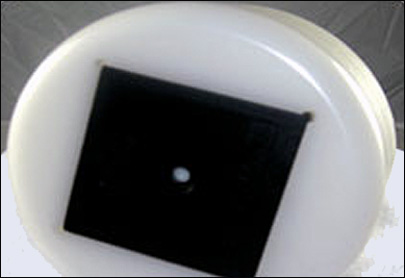Nov 07, 2006Knapp Logistics & Automation, the U.S. division of global distribution and logistics company Knapp Logistik Automation, has teamed up with RFID hardware manufacturer Escort Memory Systems to provide one of its customers, a mail-order pharmacy, with an RFID solution designed to track and fill prescriptions more efficiently.
Knapp manages the packaging and distribution operations for the mail-order pharmacy, filling orders and shipping them out to individual patients. The pharmacy asked not to be identified, according to Escort Memory Systems' marketing manager, Bradley Todd.

The solution consists of Knapp's EMS high-frequency (HF) RFID-enabled systems, built to ensure that automated dispensers fill individual bottles with the correct pills, and that filled bottles are accurately placed in totes moving the bottles down the conveyor system.
The RFID system—which includes 13.56 MHz HF tags and readers, network interfaces and cabling—was installed at Knapp's distribution center in an unspecified city in Kansas. According to Todd, installation began last April, with the system going in September.
The system labels each individual bottle with a bar code and the patient's name. The bottles are then placed into a puck, a plastic container that holds the empty containers as they travel along the conveyer. Each puck has an EMS' 250S RFID tag affixed to it. The tag complies with the ISO 15693 standard. It has 112 bytes of read-write memory and contains both an ID associated with the bar-code label on the empty bottle, and prescription information associated with a particular order and customer stored in a database.
The conveyor moves each puck and empty bottle along to an individual pill dispenser, which utilizes an RFID interrogator to read the tag on the puck and automatically fills the bottle with the correct prescription. The conveyor then moves the filled prescription bottle to a review station, where a pharmacist double-checks the order. Next, the system moves the puck with the filled bottle onto the tote line, where it removes the bottle from the puck and drops it into a plastic container called a tote. The tote has an RFID tag affixed to its bottom, its tag ID number associated with the patient's order. Each tote contains only one patient's order, but that could include multiple medications.
Correlation among the RFID tags ensures accuracy: The RFID tag on the tote is associated with the RFID tag on the puck, which, in turn, is associated with the bar-code label on the bottle. As reads occur, the numbers are correlated in the back-end database.
Medications from the pick-to-light area—which holds low-volume products manually pulled and placed in RFID-tagged totes—are also tracked. Again, the reader scans each tote tag and updates the database accordingly. The conveyer moves all the filled totes to another part of the distribution center to be checked against each order manually. Once that is done, the orders are then released for packing and shipping.
The RFID-enabled system is designed to augment the heavily automated processes currently in place at mail-order pharmacies. In general, pharmacies are capable of filling between 20,000 and 80,000 prescriptions per day, according to Escort Memory Systems. There are several types of automated pharmacies, including those owned by the Veterans' Administration, nonprofit organizations such as Sutter Health and for-profit insurers including UnitedHealth Group and Humana.
The addition of RFID is intended to help mail-order pharmacies improve efficiencies and reduce errors. For several years, the pharmacies have used bar codes to track the medicines and totes, but Todd says there are generally more errors with bar-code readings than with RFID readings. Whenever a faulty read or error arises, a person must resolve the issue.
On average, one error occurs per 100 bar-code reads, and each prescription is scanned about 100 times during the picking and packing process. For a pharmacy that fills 80,000 prescriptions per day, that translates to 80,000 errors. By replacing bar-code labels with RFID tags, Todd says, a pharmacy could cut the error rate by 99 percent, leaving only about 800 errors per day. "Each error costs the mail-order pharmacy time and money, so there is a huge economic benefit to reducing the number of errors," he says.

